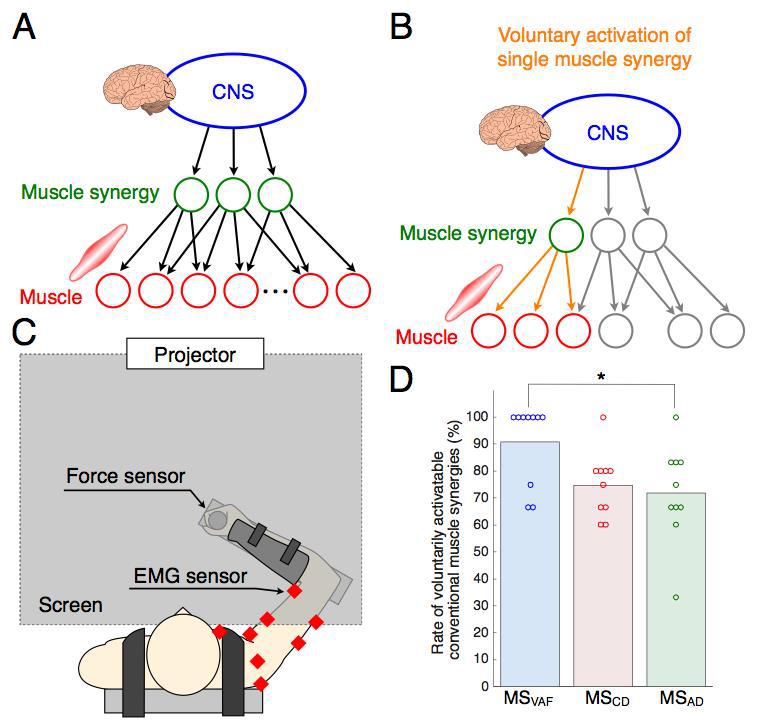September 2018 Issue
Research Highlights
Elucidating mechanisms of voluntary control of human multi-muscle
The human body is actuated by many muscles and the central nervous system (CNS) has to control such a redundant system. To simplify the control problem, the CNS controls the muscle synergy that is a functional group of some muscles. The muscle synergy hypothesis has been supported by many studies of electrophysiology and computational neuroscience.
However, the voluntary controllability of muscle synergies is not well understood. The voluntary control of muscle synergy is important both in neuroscience and also for robot control such as man-machine fusion systems. Now, Shunta Togo at the University of Electro-Communications, Tokyo, and Hiroshi Imamizu at the University of Tokyo have empirically tested whether humans can voluntarily activate a single muscle synergy.
The researchers measured muscle activity patterns of 13 muscles related to the isometric hand force production and extracted the muscle synergies. Then, they asked subjects to generate muscle activity patterns parallel to the extracted muscle synergy vector and quantitatively evaluated them.
The results demonstrated that the subjects could voluntarily activate muscle synergies based on the appropriate index. Moreover, some of the more sparse muscle synergies than conventional ones could also be voluntarily activated.
The researchers conclude that humans can voluntarily control muscle synergies. In addition, the results suggest that more sparse control unit can be applied for voluntary multi-muscle control. The voluntary control model of multi-muscle can be applied to control problems in man-machine fusion systems.




